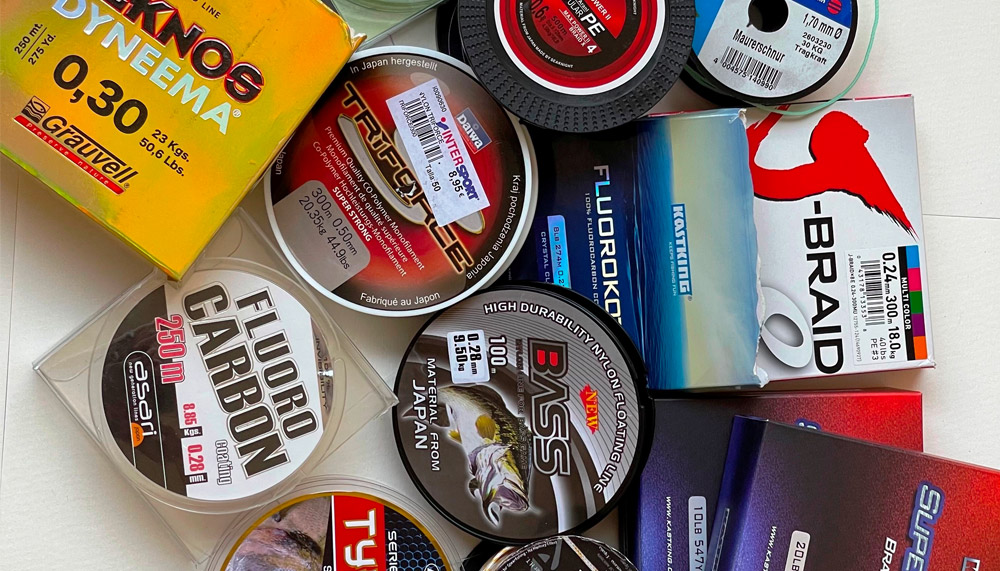
The Invisible Hero: The Crucial Role of the Fishing Line
A few years back, under the sun’s radiant glow, I found myself stationed at the edge of the rippling lake. With my fishing rod in hand, a box of tackles at my feet, I was ready for the day’s adventure. Little did I know, an ordinary fishing trip was about to teach me an invaluable lesson.
🎣 Reeling in Memories: A Tale of Passion and the Right Fishing Line
It was a struggle that day. The fish were biting, but I wasn’t catching – a classic case of ‘so close yet so far.’ Then, I realized, it wasn’t the lake, nor the fish, nor the weather. It was the fishing line. 🤯 I was using the wrong line for my circumstances, which served as an impediment rather than a help in reeling in those elusive fish.
Fishing is not just about patience or luck; it’s a delicate balance of many variables, with your fishing line playing a pivotal role. Selecting the right fishing line could make the difference between a wasted trip and a bountiful catch. 🐟🐠
That day served as a watershed moment for me. I dove into understanding fishing lines – their types, characteristics, and how to choose them wisely. Now, I’m here to share these insights with you. This article aims to equip you with comprehensive knowledge to choose the perfect fishing line. Consider it your go-to manual for making an informed choice, ensuring every fishing expedition is a memorable one. 🚀
Get ready to dive into the world of fishing lines, where the right selection can reel in not just fish, but unforgettable moments and triumphs. 🎣💪 Let’s cast the line and embark on this journey together!
🎦Video YouTube: HOW TO CHOOSE The Right FISHING LINE!
🧵 Back to Basics: Unraveling the Role of the Fishing Line
Before we delve deeper, let’s set the baseline understanding of what a fishing line is. Imagine it as a lifeline – a slender yet crucial connection between the angler and the aquatic world below. It’s not just a string to hook the fish; it’s a tool through which we feel the underwater life’s subtle rhythms, the gentle nibble of a fish, the forceful yank of a potential catch. 🎣🌊
Now, envision this: You’re standing at a fishing gear store, and you’re faced with a myriad of fishing line options. The choices can be overwhelming, but fear not! The fishing line universe is broadly divided into three types: Monofilament, Fluorocarbon, and Braided. Let’s break them down:
Monofilament Line (Mono) 🧵
This line is the jack-of-all-trades in the fishing world. It’s made of a single strand of plastic, typically nylon, and is known for its flexibility and stretchability.
- The Good: It’s easy to handle, knot-friendly, and comes in a variety of colors to suit different water conditions. Plus, it’s easy on the wallet! 💰
- The Catch: Its stretchiness can be a double-edged sword – it absorbs shocks well but can reduce sensitivity to fish bites. Also, mono deteriorates under sunlight, requiring regular replacements.
Fluorocarbon Line (Fluoro) 🎚️
Almost invisible underwater, Fluoro is made from a compound called PVDF. It’s a favorite for line-shy fish and clear water conditions.
- The Good: Fluoro sinks faster (ideal for deep water or bottom fishing), has superior abrasion resistance, and is less affected by UV rays. 🌞
- The Catch: It’s stiffer and less manageable than mono, and it generally comes at a higher price.
Braided Line (Braid) 💪
Think of the oldest fishing line getting a modern makeover! Braid lines are strands of man-made fibers like Spectra or Micro-Dyneema woven together.
- The Good: They offer an excellent strength-to-diameter ratio, no stretch (for immediate hook setting), and a long lifespan.
- The Catch: Braids can be visibly obvious in clear water, and tying knots require special techniques due to its slick surface.
Remember, there’s no ‘one-size-fits-all’ in choosing fishing lines. It’s about understanding their characteristics and matching them to your fishing conditions and style. With these basics in hand, you’re one step closer to becoming an informed and successful angler! 🎣🌟
🏋️♂️ The Power of Strength: Understanding Line Test
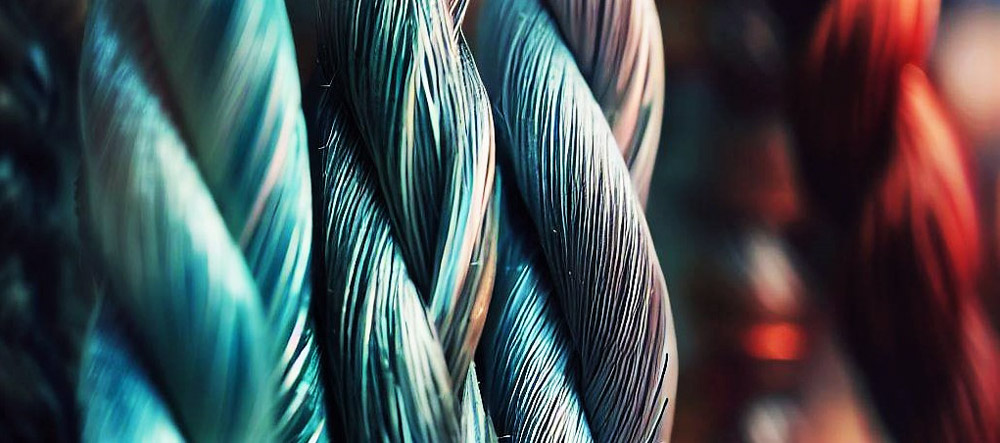
One of the main parts when assembling fishing tackle is undoubtedly the line. Many fishermen have doubts when deciding which fishing line to buy and what is best for them. If you’ve ever wondered what type of line to use, it’s okay, which is sometimes difficult for us to decide as there are multiple ranges of quality and use in the market. Your fishing success depends primarily on choosing the right line. If you know which of the three types of fishing lines (braided, mono, and fluorine) to choose, then consider that the catch is already in your bucket. Here’s how to choose the right fishing line.
A quick choice to get you started!
I recommend buying a monofilament with a diameter from 0.25 to 035 mm for the main part of the tackle 100 meters long and to it a fluorocarbon line of 0.1-0.2 mm for your leashes, to which you will fasten the fishing hooks. In the future you will have your own personal experience and knowledge, then you will find the right string for your preferences.
Selecting the right fishing line is like assembling the pieces of a puzzle, and one of the most important pieces is line strength, also known as line test. 🎣💪 This refers to the amount of stress a fishing line can withstand before breaking, typically measured in pounds.
Consider the weight of the fish species you’re targeting. For bigger, stronger fish, you’ll need a higher line test. But don’t forget to factor in your environment. Expect more underwater obstacles like rocks or debris? These can fray your line, necessitating a higher line strength. Remember, going too heavy can reduce your casting distance and make your line more visible to the fish, so balance is key! ⚖️🐟
📏 Thin or Thick? How Line Diameter Shapes Your Fishing Experience
Next in our fishing line puzzle is line diameter, the thickness of your fishing line. A thicker line is stronger and more abrasion-resistant but less subtle in the water, while a thinner line is more inconspicuous to fish but may not hold up against a larger catch. 🐋
A thicker diameter can also affect casting distance and lure action – imagine trying to throw a rope vs a thread. A thinner line is more flexible, allowing your lure to move more naturally and extending your cast. So, choose your line diameter wisely based on your target fish and technique. 🎯
🌈 The Art of Camouflage: Choosing the Perfect Line Color
Last but not least, let’s add a splash of color to our fishing line puzzle! The right line color can make your line blend in with the water, increasing your chances of a bite. 🎨🐠
- Clear or Blue-Tinted: Best for offshore fishing in clear waters.
- Green: Ideal for heavy vegetation or green tinted waters.
- Brown or Red: Good for fishing in muddy or bottom environments. Despite the myth, red does not become ‘invisible’ underwater!
Consider the water clarity, amount of light, and even the species of fish when deciding your line color. Each fishing scenario is unique, and matching your line color to the environment can provide you with that extra edge. 🏞️
Now that we’ve pieced together these aspects of choosing a fishing line, you’re ready to tackle any fishing challenge head-on! Let’s dive deeper into the specifics of the three main types of fishing lines in the next section. 🏊♂️🎣
When And How to Use Mono, Fluorocarbon, And Braided Lines?
In fact, choosing a line is not the most difficult task for a fisherman. You will find only three types on the market: monofilament, fluorocarbon, and braided. A correctly selected fishing line will provide comfortable fishing since the line provides casting to the required distance when fishing in summer, comfortable fishing with the chosen bait in winter.
It ensures the achievement of the necessary sensitivity, the implementation of effective hooking, and the implementation of hassle-free fishing out of prey. Next, I will tell you in detail about each type of fishing line so that you can understand which one suits your goals. This information will be useful for those who do not know what line the fish may not see, or for example if you do not know what type of line to use when fishing near rocks.
When Monofilament Line Is the Best Choice
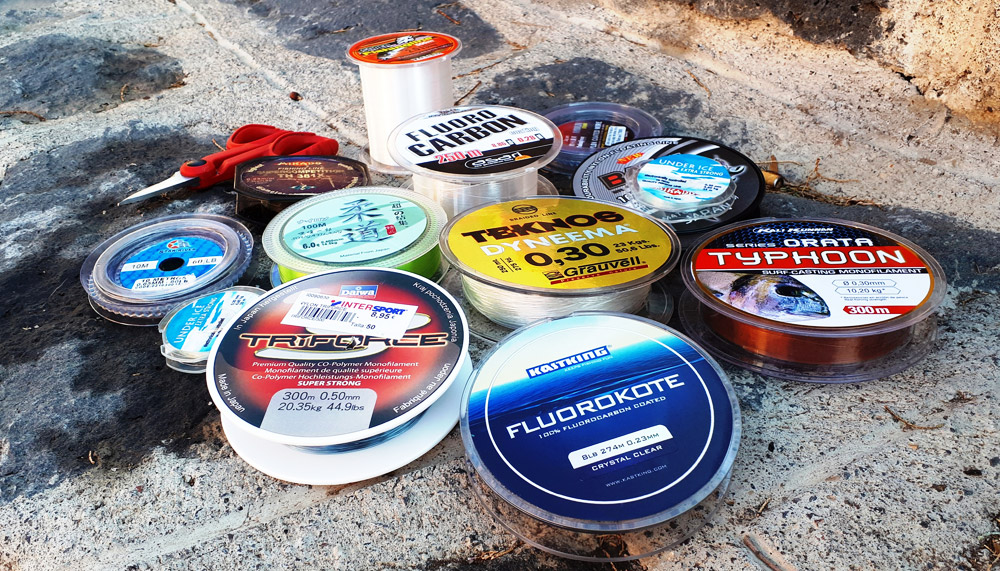
Probably the most commonly used line type in the world is the monofilament line. It is cheap to manufacture and consists of a single fiber. To do this, polymers (particles of synthetic plastic) are fused together and pushed through a tiny nozzle under high pressure. The fiber is then stretched to the desired diameter while still hot and wound directly onto a spool of cord.
The fiber thickness ultimately determines the corresponding load-bearing capacity of the tendon. The thinner it is, the less pulling force it can withstand. By adding various color pigments during the manufacturing process, they can be dyed from blue, yellow, and green to pink and orange, almost all colors are possible. Practical because under certain conditions it makes it more visible to the eye.
The most important property of monofilaments is that they can stretch up to 30%, but there are also very low stretch monofilaments. When fishing short distances, monofilaments are almost always better than braided ones, because the properties of braided on long throws are not so important here.
Despite the fact that this type is considered the most affordable for the price, I still would not advise choosing the cheapest models on the market. They will still be inferior in quality compared to premium models. They will be less tensile, and will also be inferior in abrasion resistance, and so on. Ultimately, if you decide to use monofilament, I would advise you to purchase several line models from different manufacturers and test them. This is how you can find the right option for yourself.
This type has many advantages:
- The first thing I would like to draw your attention to is that it is the easiest to cast. For beginners, this is the best option since this line does not get tangled and can be easily removed from the spool. The same cannot be said about other types.
- Secondly, it has good buoyancy compared to others. It also has a 15-30% greater stretch than others. This allows you to keep the fish on the hook, no matter how heavy it is.
- Another important advantage of this type is abrasion resistance. If you like to fish near rocks, stones, and so on, then there is a chance that your line will be damaged. But by using monofilament you can avoid such problems.
However, like other types, this line has several disadvantages. It may not apply to all types of gear. Not all fish are suitable for monofilament fishing. It can absorb water, which leads to swelling of the material and the line becomes unstable and not durable. Strongly exposed to the sun, water, temperature changes due to which, under their influence, it loses its strength and elasticity. Also, when the line dries up, it gradually deforms itself on the reel, and its inner turns become ribbed, less durable. Therefore, it is recommended to change the line every fishing season.
When Braid Line Is The Best Choice
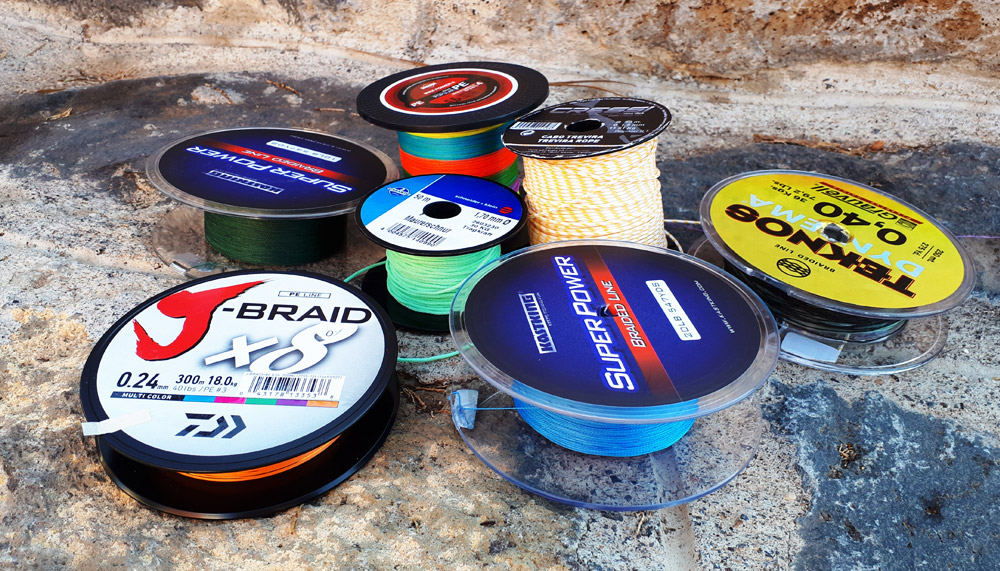
The braided line appeared later than the others and immediately won the love of fishermen from all over the world. The best manufacturers of this type are KastKingUSA, Spiderwire, Daiwa J-Braid, PowerPro, and Fireline.
This line is used when a low elastic tendon with high knot strength is required. Braided cords were originally made from natural fibers such as cotton or linen. Modern braided lines are made from synthetic fibers such as Dacron, Spectra, or Micro-Dyneema. Due to their high abrasion resistance, they can also be used where stones or sharp edges make it difficult to fish with the mono line. Low stretch provides precise lure guidance and good bite detection. Even with careful handling, the bite transmission is felt.
The main distinguishing feature of the braided line is that it has a smaller diameter than others. This allows you to put more lines on the reel. She is also great at casting and has no memory. Thanks to the use of several fibers, high-tech fabrics such as Spectra have a smaller line diameter. The fibers are woven together in a four-, eight-, 12- or 16-strand configuration. The breaking load of fishing braids is their main advantage over monofilament. With a small diameter, breaking strength is at a high level.
This type also differs in that it has no extensibility. What advantage does this feature give the angler? Elasticity with an index of zero allows you to feel minor, neat bites, for example, when fishing with a feeder at a distance of no more than 70 m. If the angler uses a nylon fishing line, then he will be deprived of this sensitivity. Why does it happen? Because when using any other fishing line, the bite impulse from the hook to the tip of the tackle is extinguished due to the extensibility of the fishing line.
Fishing with a spinning rod using a braided line only benefits, especially on long casts. For example, when fishing with a jig with a foam nozzle on a snag area. For the spinning player, fishing is fraught with difficulties in the form of bypassing grassy or rocky places. However, touching, he senses all obstacles and directs the course of the bait. The same can be said about fishing with wobblers and other artificial lures.
If we compare braided and monolines, then the first is much more expensive. But this is a smarter investment as the braid lasts longer. It also has better characteristics and is used by professional fish.
When Fluorocarbon Line Is The Best Choice
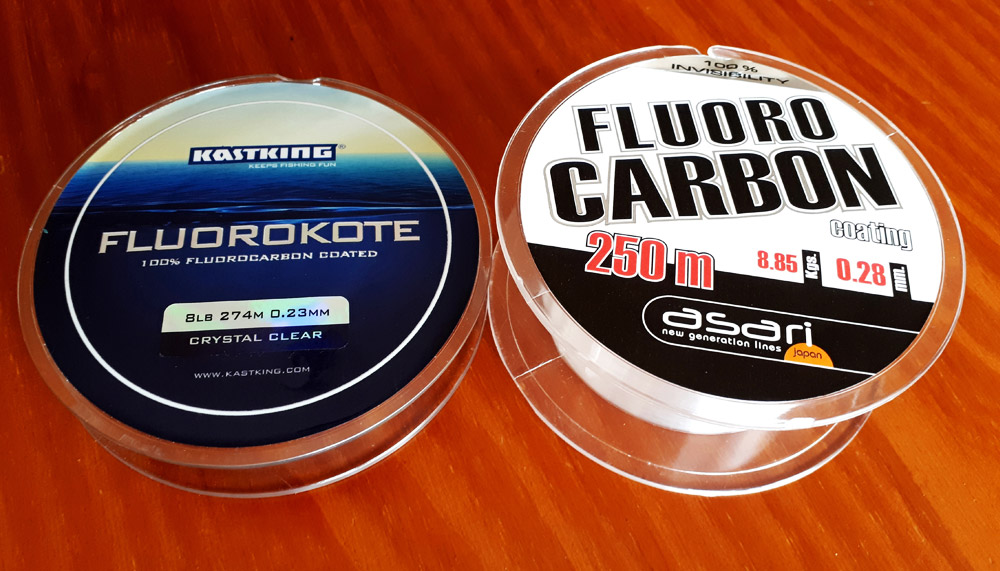
You can often read about fluorocarbon lines in the fishing literature. Some recommend fluorocarbon for leashes and other rig elements, others as the mainline for ultralight fishing, and still others for winter fishing. One way or another, this material has long entered the life of the modern fisherman.
Fluorocarbon is a material that appeared in the 70s of the last century in Japan. It is a polymer fluoride, that is, a hydrocarbon polymer containing fluorine in its molecule. Compared to pure monofilaments, this material has a higher density and provides a harder surface for the line. The density of the material also affects weight and causes it to sink faster than monofilament. An advantage when the sinking line is needed. In addition, it is argued that fluorocarbon is less noticeable for fish with a refractive index of about 1.4 (water 1.33, mono about 1.54).
This type of line has several advantages:
- It has little visibility in the water. Fluorocarbon is almost completely transparent and is indistinguishable from fish. Accordingly, it does not scare even the most cautious of them.
- High strength and rigidity. They help to protect the line from destruction when it comes into contact with the teeth of predatory fish. This is important when fishing with leash rigs.
- No signs of deformation. The fluorocarbon line will not stretch. It retains its original parameters, does not swell even after prolonged contact with water.
- Resistant to UV rays. Even leaving the coil in the sun, you don’t have to worry that the material will lose its properties.
- Frost resistance. High-quality fluorocarbon does not lose its elasticity at low temperatures. This compares favorably with nylon.
- Lack of “shape memory”. This eliminates the difficulty of getting the material off the reel. The line straightens easily even after long-term storage. The same property allows the line to be wound on a reel in a wet state. When dry, it does not deform.
- Abrasion resistance. The material is not afraid of contact with metal rings, stony bottom sediments, shell rock. It remains resistant to various types of damage.
As for the disadvantages, here it is worth paying attention to a number of points directly related to the features of fluorocarbon. Since this polymer has a higher stiffness, it is significantly less resistant to breaking loads. In addition, the cost of the material is significantly more expensive than any analogs, which is not always economically feasible.
What Color of the Line Should I Use?
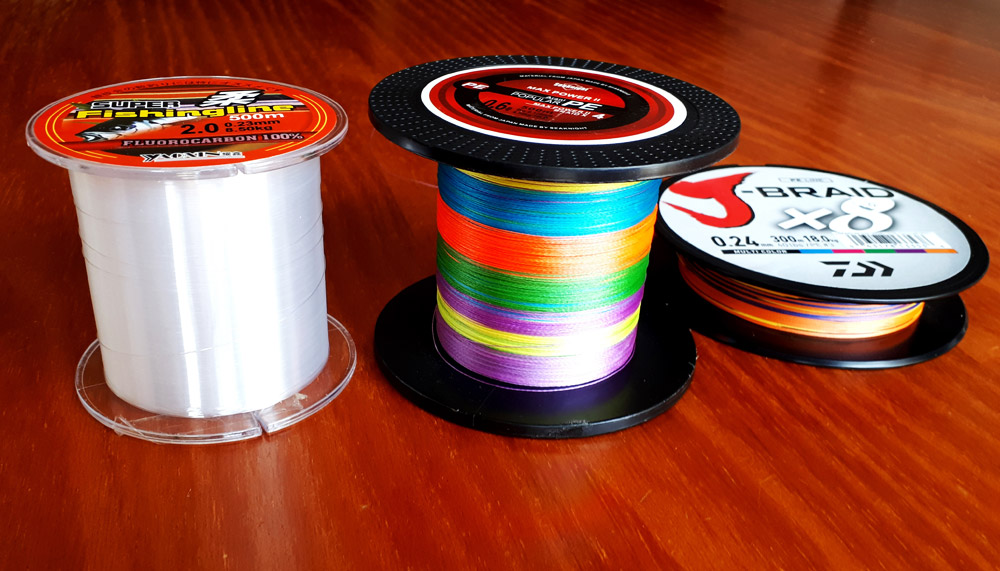
It is worth saying that scientists have proven that all vertebrate fish, which have a bright color, are able to distinguish colors. If the fish is able to distinguish colors, then the choice of line color must be approached thoroughly. No wonder, experienced fishermen, going on a night fishing, take with them a line of bright color. The fact is that predators are able to actively respond to bright, irritating color shades. Only the fish’s eye is less sensitive than the human’s.
For example, the fish will react best if the line is selected in a warm color: for example, red, yellow, or orange. The same colors are most often found on artificial lures. By the way, the line, quiet, can be combined with the color of the bait. It is worth considering that many fish, a fishing line of bright color can simply scare away. It’s all about the background color scheme of the reservoir. On peat lakes, in waters with red algae, or in places of timber floating, not a single fish will simply notice the red line, since it will merge with the surrounding color of nature.
In water with increased turbidity, a line of blue, blue, or green shades will not be so effective. This line will not get enough light, so it will reflect poorly. The fish is not afraid of such a line and therefore does not react to these colors.
It should be borne in mind that at the depth of the reservoir, the fishing line itself and its color become not so susceptible to fish. Therefore, when choosing the color of the fishing line, it is worth considering this important factor. So, a red line can irritate the eye of a fish even if the depth of the reservoir is more than five meters in depth. White loess copes with its task, both at the surface and depth, and closer to the bottom. The only exceptions are cloudy and foggy weather.
If we talk about the types of lines, then the least noticeable is a fluorocarbon, then the monoline comes. And the most noticeable is the wicker one.
The yellow and orange lines are visible in the water and allow excellent control of the tackle. In clear, clean water, such monofilament is well discernible for fish, which means it can scare away cautious inhabitants of the reservoir. Most often, these colors are used to catch predatory fish in troubled waters.
Greenline works well in most waters where the water has a greenish tint. Against the background of underwater vegetation, the green monofilament plays the role of a kind of camouflage. However, the cleaner the water of the reservoir, the more noticeable such a line is. As you dive deeper, the green color gradually changes to a darker one.
The color blue is ideal for seawater fishing.
Transparent lines are suitable for very clean freshwater as well as saltwater.
Expert Choose Best Lines For Getting Started Wherever You Fish
Now you know everything you need to know about the three types of lines. I think now you can easily choose the one suitable for your goals. However, if you are a beginner and you still find it difficult to make the right choice without experience, choose a mono thread. It will be the best choice for any scenario.
For trout, catfish, perch, panfish, use a 4-10 lb (2-4.5 kg) mono for light bait fishing. If you are using heavy carp, salmon bait, use 20 lbs (4.5-9 kg) mono.
If you want to catch tuna or large freshwater species, use a 20-30 lb (9-13.5 kg) braided line or mono. But if you are hunting for a small shark, large catfish, then you should take 30-50 pounds (13.5 – 22.5 kg).
If you have been fishing for a long time and can call yourself a professional fisherman, then the braided line is an excellent choice for you. Yes. this type is prone to confusion and is more expensive, but it has many advantages that can give you an unforgettable fishing experience.
And most importantly, do not forget that any line cannot be used forever. It has the term of a lifetime. Therefore, it needs to be changed. How often it depends on how often you use it and where.
Useful Tips
Branches and sharp edges are just a few examples of how quickly a line can be damaged. Just in case, I check the first few meters of the line before each new use. On the one hand, I stretch it between my thumb and forefinger to feel for possible damage, and on the other hand, I optically look for places that look fibrous or rough. If I find a damaged area, the cord is cut just above it. If there is nothing to complain about, it can be used again in full.
I also advise you to use a large line size as the line can lose its strength at the knot. If you want to minimize the loss of strength in the knot area, then you need to use quality fishing knots for attaching the leashes.
Deep Dive into Types of Fishing Lines
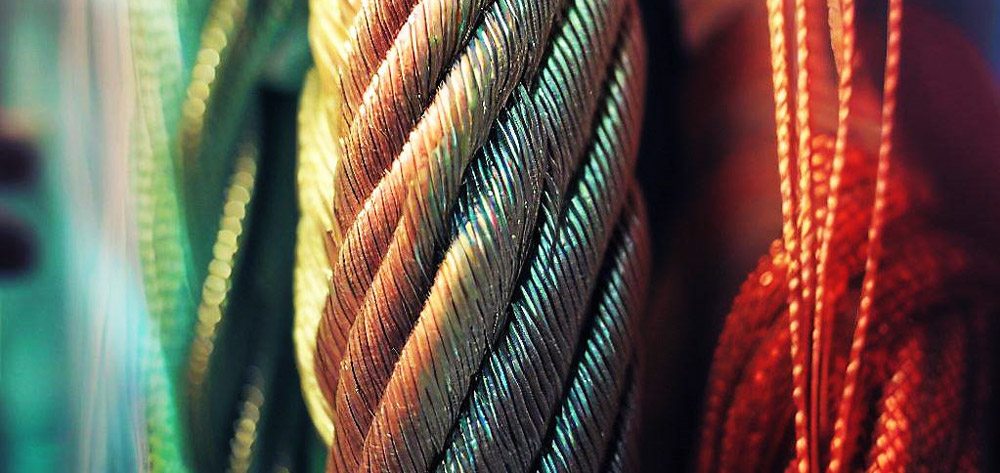
🧵 Monofilament Magic: The Go-to Line for Beginners and Beyond
Monofilament (Mono) line is like the good ol’ faithful of fishing lines. Here’s why it’s a popular choice for anglers worldwide:
- Characteristics: Mono is made from a single strand of nylon and is stretchy, flexible, and easy to handle. It floats on water and comes in a variety of colors, making it adaptable to different fishing environments. 🌈
- Benefits: Its stretchy nature allows it to absorb sudden shocks from fighting fish. Knot-tying is a breeze with Mono, and its varying colors can match any water condition. Plus, it’s typically the most affordable option. 💸
- Drawbacks: Its stretch can limit your ‘feel’ of a bite, and Mono is prone to abrasion and UV degradation, which can weaken it over time. It also has a larger diameter per strength compared to the other lines. ⛅
- Ideal Usage: Mono’s versatility makes it perfect for a broad range of fishing situations, especially for beginners or for those targeting smaller to medium-sized fish. It’s also great for topwater fishing since it floats. 🐟🎣
🎚️ Fluorocarbon: The Invisible Warrior Underwater
Fluorocarbon (Fluoro) line is the master of disguise in the fishing line family. Here’s what makes Fluoro unique:
- Characteristics: Fluoro is denser and heavier than Mono, making it sink faster in water. It’s also nearly invisible underwater, thanks to its refractive index close to that of water. 🌊
- Benefits: Fluoro’s low visibility makes it perfect for clear waters or line-shy fish. It’s also highly resistant to abrasion and UV rays. Its less stretchy nature provides a good ‘feel’ for detecting bites. 🕵️♂️
- Drawbacks: It’s stiffer and harder to knot than Mono, and Fluoro’s sinking nature may not be ideal for topwater lures. Plus, it’s generally more expensive. 💰
- Ideal Usage: Fluoro is a favorite for clear water conditions, deep water or bottom fishing, and for targeting line-shy species. It’s also popular as a leader material tied to the end of a different mainline. 🎣👀
💪 Braided Line: Ancient Solution for Modern Fishing Challenges
Braided (Braid) line combines the old with the new, providing a unique set of advantages for today’s angler:
- Characteristics: Braid lines are made from multiple strands of synthetic fibers woven together, creating a thin yet extremely strong line. It has virtually no stretch, which allows immediate hook sets. 💥
- Benefits: Braid’s high strength-to-diameter ratio means you can pack more line on your spool. Its no-stretch property provides excellent bite detection, and it has a long lifespan. 📅
- Drawbacks: Braids are more visible in clear water and tying knots with braid require special techniques due to its slick surface. It’s also more expensive than Mono. 🌊
- Ideal Usage: Braid is perfect when you’re battling big fish, fishing in heavy cover, or need a long cast. It’s also ideal for deep-sea fishing due to its small diameter and high strength. 🐠🎣
By understanding the strengths and weaknesses of each line type, you can make an informed decision based on your fishing environment, technique, and target species. Choose wisely and let your line become an extension of your fishing prowess! 💪🎣
🎯 Target Species: The Key Player in Your Line Decision
Your targeted fish species plays a significant role in your fishing line selection. A heavier, stronger species requires a line with high tensile strength – think braid or heavy-duty mono. On the flip side, smaller or line-shy fish might call for a subtler approach using a thin diameter and low-visibility line like fluorocarbon. Always remember: your fishing line should match the ‘muscle’ and habits of your target fish. 🐟💪
🏞️ Mastering Your Environment: Choose Your Line Wisely
Every fishing environment presents its unique challenges and variables, which should guide your line choice:
- Freshwater: Here, visibility is often lower, allowing the use of thicker, more visible lines. Mono works well for its versatility. 🏞️
- Saltwater: Saltwater environments usually house larger fish species and demand a line with higher strength and corrosion resistance. Braided lines excel in this setting. 🌊
- Ice Fishing: Low temperatures call for a line with good flexibility in the cold, making mono a common choice. But remember, low visibility under ice can also favor the use of fluorocarbon. ❄️🎣
Adjusting your line to your environment is key to outsmarting your aquatic adversaries!
🎣 Technique Matters: Match Your Line to Your Method
Your fishing technique adds another dimension to your line decision:
- Trolling: Here, a line with a high strength-to-diameter ratio is essential to withstand the constant water pressure. Braided lines are a popular choice. 🚤
- Fly Fishing: This technique requires a specialized fly line, but for the leader and tippet, mono or fluorocarbon could be ideal due to their versatility and knot strength. 🦟
- Casting: If you’re casting in heavy cover, a strong, abrasion-resistant line like braid is vital, while open water casting might allow for more delicate lines like mono. 🎯
The right line for the right technique can significantly boost your fishing performance. Experiment, learn and refine your choices based on your fishing method.
By considering the species, environment, and your technique, you can zero in on the best fishing line for your unique situation. Remember, fishing is a blend of knowledge, skill, and intuition – continue to gather experiences and learn from each cast. 🎣🌊🍀
Video on how to fish with the braided line on a jig fishing rod:
🔧 Pro Tips to Keep Your Line in Prime Condition
Taking good care of your fishing line isn’t just about preserving your investment – it’s about maximizing your potential for success each time you hit the water. Here are some insider tips to keep your line in top shape:
- Avoid Overfilling Your Reel: Keep your line tensioned well on the reel to avoid tangling and weakening. But beware of overfilling – it can make your line more prone to wind knots and backlash. Balance is key! 🎣🔑
- Regular Line Checks: Check your line frequently for nicks and abrasions – they are early signs that a line might fail. Spot it early, and replace if necessary to avoid losing the ‘big one.’ 👀
- Proper Line Storage: Store your line in a cool, dark place when not in use. Exposure to sunlight and heat can degrade the line. Even better, store spools in sealed bags to minimize exposure to the elements. 🌞❌
- Line Conditioners: Use line conditioners or lubricants. They reduce memory (coiling of the line), maintain flexibility, and increase casting distance. A little care goes a long way! 💦
One memory that sticks with me is when I lost a trophy bass due to a neglected fishing line. I was so excited about the fishing trip that I overlooked the pre-trip line check. The monster fish bit, and I started reeling, but halfway through, the line snapped! That day, I learned the hard way that a little maintenance would have saved my prize catch. 🐟💔
🧠 Become a Line Expert: Learn from Every Cast
My fishing adventures have taught me that understanding and caring for your line is as crucial as knowing where the fish are biting. Each fishing trip is an opportunity to learn more about your gear. Pay attention, adjust, and don’t repeat my bass mistake. Remember, fishing is not just about the catch; it’s about becoming one with the water and the life it contains. Enjoy the journey as much as the destination. Happy fishing! 🎣🌊🚣♂️
🎣 Wrapping Up: Master Your Line, Master Your Catch
There are no trifles in modern fishing – everything is important in it. A fishing line is just as important a component of any tackle as a rod, reel, or lure. As you already understood, you cannot use one type of fishing line for all fishing conditions. Before choosing favor of this or that type of fishing line, you need to think about where you are going to fish, what fish, what type of water, tackle used, etc.
In addition, do not forget to take into account such points as strength, tear resistance, diameter, knot strength, etc. The best option is to have all types of lines with you and use them as intended. If you still have doubts, then I recommend that you contact the seller of the fishing accessories store. He will be able to help you when you tell you exactly where and how you want to fish.
Choosing the right fishing line might seem a trivial detail in the grand scheme of fishing, but its impact is profound. Your choice of line is the vital link between you and the fish – it enhances your control, your sensitivity, and ultimately, your success. 🏆
I implore you to invest time in understanding this often overlooked piece of gear. Embrace the nuances of different line types, adapt them to your target species, fishing environments, and techniques. Nurture your line, just as you would nurture your passion for this fulfilling hobby. 💕🎣
Because in the end, fishing isn’t just about the thrill of the catch. It’s about connecting with nature, mastering a craft, and relishing the satisfaction that comes from it. It’s about learning and growing with each cast. 🌿🌊
So next time you venture out on a fishing expedition, remember these tips. Experiment, learn, refine, and most importantly, enjoy. Take a moment to appreciate the line in your hands – that thin, inconspicuous thread that connects you to a world of aquatic wonders. 🌎🐟
And now, I’m handing you the reel. It’s time for you to cast your line, and join me in this journey of constant discovery. See you on the water, and remember – the best line is the one that brings you the most joy. 🎣🌅🌈

I live in Tenerife (Canary Islands) for the last 10+ years and share my daily fishing experiences on my website. Many years of personal experience as a fisherman and the vast experience of my friends allow me to write professionally on any fishing topics (from choosing a flashlight and equipment to deep-sea fishing).
All of my advice is based on practical real-world experience and will be useful to both novice anglers and professionals. Read more about the author.
Affiliate Disclosure: FishReeler.org sometimes gets paid for listings, through sponsors or affiliate programs like Amazon, Ebay, Cabelas, Bass Pro Shop, Shimano, Daiwa, Rapala, Renn, Okuma, KastKing, etс. Clicking a link helps keep FishReeler.org free, at no extra cost to you!
About the author: Each article is verified by the fishing expert Sergio Smirnoff. The articles are written by professional and amateur fishermen with 20+ years of fishing experience.
Note: The views and opinions expressed in this article are those of the authors and do not necessarily reflect the official policy or position of any agency. The articles are for informational purposes only, share your opinions in the comments and join the fishing discussions, let's share our fishing experiences together!

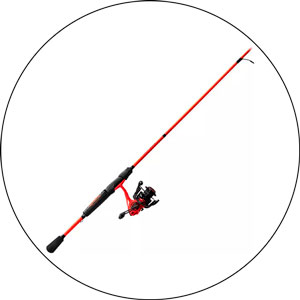
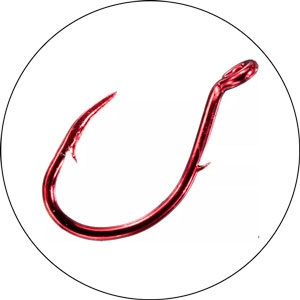
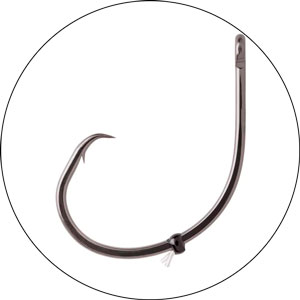
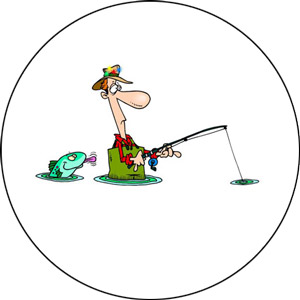
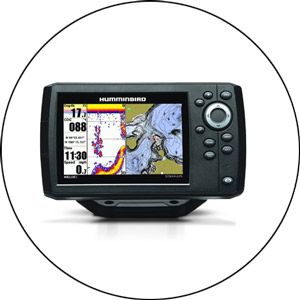
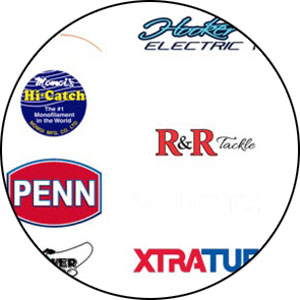
The article offers valuable information for anglers looking to select the right fishing line for their needs. It discusses various factors that anglers should consider, such as line material, diameter, strength, and stretch.
One thing that stands out in the article is the emphasis on matching the fishing line to the fishing conditions and the type of fish being targeted. This is crucial for achieving optimal results and ensuring that the line can handle the weight and size of the fish being caught.
The article also provides a helpful overview of different types of fishing lines, including monofilament, fluorocarbon, and braided lines. It explains the advantages and disadvantages of each type and provides guidance on when each type might be most appropriate.
Thank you so much for sharing this comprehensive guide on choosing fishing lines! As someone who is relatively new to fishing, I found your insights to be incredibly helpful and informative.
I appreciate how you broke down the benefits of using a braided line, particularly its lower diameter and lack of line memory. Your explanation of how the smaller surface area results in less friction and allows for heavier line usage without impeding performance was especially insightful.
I also found your comments on braid longevity and high-viz lines to be very useful. It’s good to know that investing in a higher quality braid like Powerpro can lead to fewer re-spools and better overall performance.
Your thoughts on braid brands and fluoro vs mono lines were also helpful. I appreciate that you provided your personal preferences on braid brands like Powerpro and Suffix, as well as your thoughts on fluoro’s advantages in terms of visibility and stretch.
I’ve been using braid for my fishing needs for several years now, and I find it to be a reliable option due to its thinner diameter, which allows it to cut through the water quickly without sacrificing strength. Additionally, I find multi-colored braids helpful when trolling, as I can easily determine how far back the line is if I get a hit.
Personally, I’m a big fan of the Sufix 832 and use it as often as I can. I recently tried Kast King Silky 8 for my ice fishing setups, and I was pleasantly surprised by its performance. However, I’m not sure how well it would hold up in saltwater scenarios, so I plan on sticking with Sufix for those situations.
On the other hand, I haven’t had good experiences with Power Pro or Fireline. Ultimately, the brand and type of braid you use will depend on your individual preferences and needs, but I highly recommend giving Sufix 832 a try if you haven’t already.
I completely agree with you on the benefits of using metered braid for trolling, as it definitely helps with estimating the distance of the line. Personally, I prefer using Suffix 832 for its reliability and durability.
While Kastking’s Silky 8 is a decent option for those who don’t cast too frequently and don’t plan to use it in saltwater, it doesn’t quite meet the standards of a good quality braid. In fact, I’ve had an unpleasant experience with it on one of my reels which I’ve only used a handful of times.
Regarding PowerPro, I’m actually one of the few who don’t like it. It’s true that it’s a popular choice among anglers, but it just doesn’t work for me, and it’s not solely due to its higher price point. I’ve tried it on multiple occasions, and each time I found it to be more prone to wind knots and backlashes compared to other braids on the market.
I haven’t tried Berkeley’s line due to a personal issue, but I’ve heard good things about it from others. In general, I agree that mono/fluoro mainline has its uses, such as cutting costs for trolling in the mid to high-water column or for dunking at a reef for massive fish or sharks. However, for most other scenarios, I prefer using a braid due to its thinner diameter and strength.
As someone who loves fishing, I feel like sharing what I know about my favorite activity. Braid is my go-to choice for fishing lines due to its high strength and low diameter. It’s made from fibrous strands of petroleum-based material that are braided tightly together, similar to how hair or rope is braided. Most commercial braids have 8-9 strands, but the effect is the same.
Braid is excellent for almost everything, except abrasion. Each fiber secures the others, and none of the individual fibers are necessarily strong or resistant to abrasion. Reefs, with their porous and sharp structures, are incredibly abrasive. Even rock-based reef systems have barnacles, and mussels, or are just sharp on their own, presenting the same problem.
The most likely section of the line to come into contact with the reef structure on the ocean floor is the end of it, as the braid is buoyant due to its petroleum base. The end gets dragged down because of the weight of the sinker, fish, or lure, and many reef fish will try to seek shelter in reefs when hooked.
Braid-only is suitable for surf-fishing with lures, not soaking bait. Beach structure in surf fishing locations is usually smoothed out over time from crashing surf, so there’s not much risk of abrasion. The water is more stirred up by the waves and tidal currents, and the fish are usually faster and more active to compensate for these tides. So while braid visibility might be an issue in some places, it’s not really relevant in the surf (with lures).
There are also advantages to using braid in the surf. It floats, so it gets less wound up in the rough surf, and if you’re fishing somewhere with seaweed or kelp, braid slices through it.
You need to make sure your line is spooled tightly on your reel, with no criss-cross mess. If it’s all screwed up, you don’t need to get a new line. When you’re motoring out to your fishing location, let out most of your line with something on the end of it. It will provide tension for you to reel against to get re-spooled properly.
You may want to use a good mono backing to prevent pitting, which results in twists and knots. Some reels have grips, but most conventional reels popular for trolling don’t. As for my personal preference, I don’t like Berkley due to a personal issue, so I haven’t tried it. Mono/fluoro mainline is suitable for specific scenarios, like cutting costs for trolling mid/high water columns or dunking at a reef for massive fish/sharks.
I see your point about recommending braid to absolute beginners. You make valid points about the challenges of tying knots, choosing the right strength, and dealing with hang-ups. I agree that it may not be the best recommendation for someone just starting out.
Mono is definitely a more beginner-friendly option and a better place to start for those who are new to fishing. It’s easier to tie knots and it’s less expensive, making it a good choice for those who are just getting started.
Of course, if someone specifically asks about braid or is interested in exploring different options, then it’s worth discussing the pros and cons. But overall, I agree that mono is a good choice for beginners.
I really enjoy using braid whenever I have the option to do so. The fact that it has zero stretch, great abrasion resistance, and a tiny diameter makes it a great choice for me. I also like to challenge myself by using the lightest test line possible for each setup.
For instance, I have a 3 lb braid on my ultralight spinning rig, a 20 lb braid on my Musky setup, and an 8 lb braid on my bass/walleye/etc. rig. I have never had any issues with the braid, and I even have several old ceramic guide rods that have no damage from it. Overall, I find that braid is a great choice for me and I have had a positive experience using it.
It really depends on where I am fishing, but on average, the bass tends to be around 2-3 pounds in my area. I have also used Berkley Vanish in the past and I agree that it’s a great mono line that won’t break the bank.
I typically use an 8lb test line as well, as I find it strikes a good balance between not losing fish and not spooking them with a visible line. The long casting distance and low memory are also big pluses for me, and I usually get a few months of use out of each spool.
I do understand the appeal of fishing with braid for the added sensitivity and reduced break-offs, but it’s important to keep in mind that it can be a pain to untangle if you get a wind knot or backlash.
In some cases, though, such as fishing in areas with a lot of underwater cover or grass, a braid may be necessary to effectively pull the fish out of those obstacles when you hook up. It’s all about finding the right line for your specific fishing conditions and preferences.
I completely agree with you about Maxima Ultragreen, it’s one of my favorite monofilament lines. However, I have noticed that it does tend to coil up in colder weather. I recently tried out P-Line Fluoroclear during the winter and I was really impressed with it. It’s very limp and works great for float fishing.
As for the braid, I prefer to use Power Pro. One thing to keep in mind is that braid can be dangerous if you’re not careful. If you try to yank out a snag, it can easily cut your hands. I always carry a pair of thick gloves or a dowel rod with me just in case.
I also tend to only use pure fluoro for leaders as it can get pretty expensive to use as a main line. Overall, I think it’s important to experiment with different types of lines to find what works best for you and the type of fishing you’re doing.
I totally agree with you, especially with the choice of the Maxima Ultragreen Line – it is my favorite line. Only ultra-fluorocarbon lines.
When it comes to bass fishing, I highly recommend using a braid as your main line. I suggest starting with an 8 lb test mono, which translates to about 15 or 20 lb test braid. Keep in mind that when choosing a braid, you should opt for a higher lb test than the mono your reel calls for, as the braid is thinner and takes up less space on the reel.
For example, if your reel calls for 125 yards of 6 lb test mono and you want to use a 15 lb test Power Pro braid, the spool 125 to 135 yards of the braid to ensure your reel is fully filled.
For your specific reel, find the strength of the braid that has the same diameter as 8 lb test mono, and spool the required 285 yards onto your reel. This will give you the most distance in your casts, as lighter braid with no memory will strip from your spool much easier.
If your reel is labeled as “braid ready,” then you can assume that braid is fine to use, but be aware of its superior strength and smaller diameter when freeing snags. Always use a stick to wrap your line around when pulling on snags, as pulling with your hand could result in a dangerous cut.
I recently switched to Spiderwire Stealth braid in moss green, with a 15lb test and 4lb diameter, for my 5’6″ UL spinning setup. And let me tell you, it works beautifully! I actually like it way more than mono. The sensitivity is amazing, and I can feel every little nibble and bite.
For my heavy 7″ setup, I went with the Spiderwire Stealth moss green in 30lb test and 8lb diameter. It’s been performing great and I’ve had no issues with it.
And for my saltwater setup, I went with the 65lb test and 15lb diameter Spiderwire Stealth in moss green. It’s been handling the big fish like a champ, and I’m really happy with how it’s been holding up in the saltwater environment.
I’m really impressed with the Spiderwire Stealth braid in moss green. It’s strong, sensitive, and has been performing great across all my setups. I highly recommend giving it a try!
In my experience, braid is a great choice for both spinning and bait casters. However, I have noticed that fused braids like Fireline can be a little stiffer and more prone to memory, although they are smoother and float higher on the water. Plus, fused braids tend not to wrap around the tip of the line as much.
Personally, I prefer Tufline, which is a non-fused braid. While it may be slightly thicker than PowerPro, another non-fused braid, the coating tends to last a bit longer. Unlike mono, braid does not break down in sunlight, but rather only wears through use.
Another great thing about braid is that it doesn’t stretch, which means you can feel everything that’s happening on the other end of the line. Plus, braid is thinner per pound test than mono. For instance, a 65lbs braid has almost the same diameter as a 10lbs mono. It does float, though, so if you need to go deeper, you’ll need to add more weight. Additionally, the floating property can put a slight bow in the line.
I find braid to be a great choice for anglers who want to feel more sensitive and have more control over their line. Whether you prefer fused or non-fused braids, they both have their advantages and can be a great option for your fishing needs.
I wanted to share a little advice on fishing gear and technology. While it’s easy to blame your line for losing that big catch, the truth is, it was probably you who lost that fish. Don’t get too caught up in finding a technological solution to all your fishing problems, as this can lead you down the path of becoming an Orvis-Boy. A real fisherman doesn’t need fancy technology to catch fish.
Instead, clear your mind of all the marketing propaganda and think carefully about the kind of fisherman you want to be, and the kind of person you want to be. Personally, I really like the Trilene XL line. I’ve caught some huge fish, including 50-pound King Salmon in Alaska, 80-pound sturgeon, and even an 18-pound pike on a 4-pound XL. I typically use 6-8 pound Trilene XL on most of my rods.
While superliners are great for certain types of fishing, like flathead catfish and gar, I find that Trilene XL works just fine for most of my needs. Don’t worry too much about having the strongest, most expensive line on the market. Instead, focus on developing your skills as an angler, including back reeling and using your drag properly.
Remember, even the best fishermen lose a lot of fish. No million-dollar gadget or super-strong line will ever change that. So, keep practicing and learning, and enjoy the thrill of the catch, regardless of what type of line you’re using!
I wanted to share some insights on why I prefer to use 40# braid on my setups for spinnerbaits, chatter baits, and other applications where a large single hook is used. The reason is simple: thin braid is extremely prone to abrasion and will snap in an instant if it comes into contact with rocks, wood, zebra mussels, or any other rough surface under strain.
Moreover, a large toothy fish hitting a moving lure will bite it off if you are using a small diameter line. I have personally experienced pike bite off 20# fluorocarbon leaders and I have even seen big muskies bite through 120# fluorocarbon leaders. Although you can catch these fish on the 6# test, it is not ideal, and you will likely lose a lot of fish if you try.
My goal is always to catch the fish and release it as quickly as possible, not to leave a hook or lure in its mouth. So, I prefer to use a stronger line to ensure that the fish is landed safely without harming it or losing it due to a weak line.
In conclusion, while it may be tempting to use a lighter line to increase the challenge or prove your angling skills, it’s important to prioritize the safety of the fish and ensure that it is released unharmed. Using a stronger line will help you do just that.
When it comes to choosing the right rod, reel, and line, I follow a simple formula. I take the average size of the fish I’m targeting, multiply it by 300, and choose a reel size accordingly. Then, I select a rod power that complements that reel and picks a line based on the manufacturer’s recommendations. For longer casts or if fishing near cover, I go heavier on the line.
For surfing or larger games, I like to use 10 lbs of line per ounce of weight I’m throwing to reduce the risk of breaking off during hard casts. Additionally, I always opt for a leader that is 10-20lbs heavier than my main line.
If you don’t want to do any calculations, a 7′ medium/fast rod with 15# braid on a 3000 reel is a great all-around setup. Set your drag to roughly 5 lbs and you’ll be ready to catch 99% of freshwater, inshore, and surf fish.
Don’t worry about the gear being “too small” – my medium-light 2500 setup with 10# braid has conquered a 40″ wide Cownose Stingray, a 39″ bluefish, and several over-slot reds. Trust me, sometimes “more than enough” is all you need!
It seems like a 10lb braid is the go-to for most anglers in my area. However, I prefer to use ultra-light setups for panfish, trout, and small bass, and medium-light setups for bigger presentations. I typically use braid as light as 2lb and up to 6lb for panfish, and 10lb braid for bigger bass presentations. I always use a fluorocarbon leader.
Using a light rod and braid combo allows me to cast further than those using heavier gear. While I don’t lose fish often, I think it’s more sporting to have a chance. I also don’t rush to reel in my catch like I’m in a tournament. It’s all about enjoying the experience and being in the moment.
I typically go for a 10-16lb braid when fishing with spinning reels. Originally from the Midwest, I started using it for freshwater and then brought the technique to Florida, where I now use it for brackish, salt, and freshwater fishing. However, I always put on a leader when fishing in the ocean or brackish water, just to be safe.